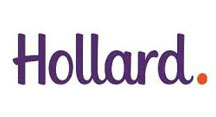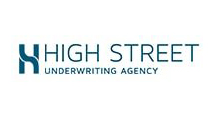 For cleaners, workplace safety is about personal wellbeing and about reducing liability risks for their business. Hazards such as wet floors, chemical spills, and improper equipment handling can lead to injuries and claims. By adopting safe practices, cleaners can create a more secure environment and potentially lower public liability risks.
For cleaners, workplace safety is about personal wellbeing and about reducing liability risks for their business. Hazards such as wet floors, chemical spills, and improper equipment handling can lead to injuries and claims. By adopting safe practices, cleaners can create a more secure environment and potentially lower public liability risks.
Here are some key strategies to minimise workplace hazards:
-
Recognise Common Hazards
Cleaners often work in dynamic environments where hazards can quickly arise. Common risks include:
- Slippery Floors: Mopped or polished floors can cause slips and falls.
- Chemical Exposure: Harsh cleaning agents may lead to skin irritation or respiratory issues if improperly handled.
- Ergonomic Injuries: Repetitive motions or heavy lifting can strain muscles.
- Electrical Hazards: Misuse of cleaning equipment, such as vacuum cleaners or polishers, could lead to electrical accidents.
-
Use Warning Signs Effectively
Wet floor signs and hazard markers are essential tools for preventing accidents. Ensure these signs are:
- Placed visibly around cleaning areas.
- Used promptly after mopping or addressing spills.
- Removed only when surfaces are completely dry.
-
Handle Chemicals Safely
Cleaning chemicals must be managed responsibly:
- Read product labels and follow instructions for safe use.
- Wear protective gear such as gloves, goggles, and masks.
- Store chemicals in their original containers, away from direct sunlight and out of reach of members of the public.
-
Proper Equipment Use
Improper use of cleaning tools and machinery can create risks. To prevent this:
- Train team members on correct operating procedures.
- Inspect equipment regularly for damage or malfunction.
- Replace frayed cords or defective machinery immediately.
-
Adopt Ergonomic Practices
To avoid physical strain:
- Where possible use tools with ergonomic designs, such as lightweight mops and adjustable handles.
- Lift heavy objects correctly by bending at the knees and keeping the back straight.
- Rotate tasks to prevent overuse injuries from repetitive motions.
-
Conduct Regular Risk Assessments
Identify and mitigate risks by performing routine workplace inspections. Look for hazards such as uneven flooring, unsecured wires, or improper storage practices. Regular assessments ensure that safety protocols remain effective and up to date.
-
Encourage a Safety Culture
Involve your team in safety practices:
- Provide training on workplace hazards and emergency procedures.
- Encourage team members to report risks promptly.
- Create a culture where safety concerns are taken seriously and addressed without delay.
Linking Safety to Reduced Liability Risks
Implementing these safety measures protects cleaners, clients and passers-by, and may also reduce liability risks. Slip-and-fall incidents or injuries caused by chemical exposure can lead to costly claims. By implementing risk management successfully, cleaners may be able to avoid liability claims, which may have a favourable impact on their public liability pricing vs cleaners with a poor claims history.
Maintaining a safe workplace also aligns with Australian Occupational Health and Safety (OHS) laws, which mandate providing a secure environment for workers and the public. Compliance can further minimise exposure to legal claims and enhance overall business sustainability.
Conclusion
Safety in the cleaning industry extends beyond personal wellbeing to encompass broader business benefits, such as reducing liability risks and enhancing operational efficiency. Regular training, proper equipment use, and a commitment to identifying hazards can significantly improve workplace safety. By putting these measures into practice, cleaners may safeguard themselves, their teams, and their clients from unnecessary harm.
Disclaimer: The content of this blog article is intended for general informational purposes only and should not be considered as professional advice. While we strive to ensure accuracy, we make no guarantees about the completeness or reliability of the information. For guidance regarding what and how much public liability insurance cover you need, we recommend consulting with a business insurance broker. Any actions you take based on any information provided here are at your own discretion.





